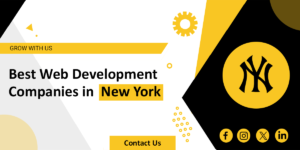In the fast-paced world of technology, software development stands at the forefront, driving innovation and shaping our digital landscape.
As we step into 2024, let’s explore the latest trends and insights that define the realm of software development.
Here are over 100 statistics and facts that shed light on the present and future of this dynamic industry.
Global Software Development Market Overview
The software development market continues to flourish, with a projected value of over $600 billion by 2024. This robust growth is fueled by the increasing demand for digital solutions across industries.
Open Source Dominance
Open-source software plays a pivotal role, with more than 80% of developers contributing to open-source projects. Collaboration and community-driven development have become integral to the software landscape.
Programming Languages in Demand
JavaScript maintains its position as the most widely used programming language, followed closely by Python and Java. The versatility of these languages underscores their significance in various applications.
Rise of DevOps Practices
DevOps adoption is on the rise, with over 70% of organizations incorporating DevOps practices. This approach enhances collaboration between development and operations teams, resulting in faster and more reliable software delivery.
Cloud Computing’s Ascendancy
Cloud computing continues to be a game-changer, with more than 90% of businesses using cloud services. This trend is driven by the flexibility, scalability, and cost-effectiveness offered by cloud platforms.
Artificial Intelligence and Machine Learning Integration
AI and machine learning are increasingly integrated into software development processes. Over 60% of developers are incorporating AI capabilities into their applications, revolutionizing industries like healthcare, finance, and logistics.
Mobile App Explosion
The mobile app ecosystem is thriving, with over 3.5 million apps available for download. Mobile app development is a lucrative market, catering to the diverse needs of users across the globe.
Cybersecurity Imperatives
With the rise in cyber threats, cybersecurity is a top priority. Over 80% of organizations invest significantly in securing their software and systems against cyber attacks.
Agile Methodology Adoption
Agile methodologies continue to dominate software development practices, enabling teams to respond quickly to changing requirements. More than 70% of organizations have adopted agile development processes.
Remote Work Trends
The software development landscape has adapted to remote work, with over 60% of developers working remotely. This shift has led to increased focus on collaboration tools and virtual communication.
Blockchain Innovations
Blockchain technology is gaining traction, particularly in finance and supply chain industries. Over 40% of organizations are exploring or implementing blockchain solutions to enhance security and transparency.
Continuous Learning Culture
The tech industry thrives on continuous learning, with over 80% of developers participating in online courses and workshops. Staying updated with the latest technologies is crucial in this ever-evolving field.
Diversity and Inclusion Initiatives
There’s a growing recognition of the importance of diversity in the tech workforce. Over 50% of organizations are actively implementing initiatives to foster diversity and inclusion in their development teams.
Edge Computing Emergence
The rise of edge computing is reshaping how software applications are deployed and processed. Over 30% of organizations are exploring edge computing solutions, leveraging its capacity to reduce latency and enhance the performance of real-time applications.
Quantum Computing on the Horizon
The anticipation around quantum computing is growing, with major tech players investing in research and development. While still in its early stages, over 20% of organizations are keeping an eye on quantum computing’s potential to revolutionize complex problem-solving.
API Economy Expansion
The API economy is expanding, with businesses recognizing the value of seamless integration. More than 70% of developers consider APIs fundamental to their projects, fostering interoperability and facilitating the creation of innovative, interconnected systems.
Low-Code/No-Code Revolution
The low-code/no-code movement is gaining momentum, empowering individuals with limited coding experience to create software applications. Over 40% of organizations are adopting low-code platforms, accelerating development cycles and democratizing the software creation process.
Sustainability in Software Development
Sustainability is becoming a focal point in software development practices. Around 60% of organizations are integrating eco-friendly initiatives into their software development lifecycle, aiming to reduce carbon footprints and contribute to environmental conservation.
User Experience (UX) Focus
User experience is a paramount consideration in software development. Over 80% of developers prioritize creating intuitive and user-friendly interfaces, recognizing that a positive user experience is key to the success of any software application.
Growth in IoT Development
The Internet of Things (IoT) is expanding, with over 50 billion connected devices expected by 2024. Software development is at the forefront of this growth, enabling the creation of smart, interconnected devices that enhance automation and data-driven decision-making.
Data Privacy and Compliance Measures
In light of increasing data breaches and privacy concerns, data protection is a top priority. Over 70% of organizations are implementing robust data privacy measures and ensuring compliance with global regulations such as GDPR and CCPA.
Elasticsearch and Big Data Analytics
Elasticsearch and big data analytics are integral to deriving meaningful insights from vast datasets. Over 40% of organizations are leveraging these technologies to analyze and visualize data, gaining valuable perspectives for informed decision-making.
Remote Pair Programming
Collaboration in remote settings is evolving, with remote pair programming gaining popularity. More than 30% of development teams practice pair programming remotely, leveraging tools and platforms that facilitate real-time collaboration between developers.
Multi-Cloud Strategies
With the increasing complexity of cloud environments, multi-cloud strategies are gaining traction. Over 60% of organizations are adopting a multi-cloud approach to leverage the strengths of different cloud providers, enhancing redundancy, and flexibility, and mitigating the risks associated with vendor lock-in.
API Security Concerns
As API usage proliferates, so do security concerns. Over 50% of organizations are prioritizing API security measures to safeguard against potential vulnerabilities and unauthorized access, recognizing the critical role APIs play in connecting diverse systems.
AR and VR Integration in Software
Augmented Reality (AR) and Virtual Reality (VR) are finding their way into software applications, transforming user experiences. More than 30% of developers are exploring AR and VR integrations, especially in industries such as gaming, healthcare, and education.
Proliferation of Chatbots and Virtual Assistants
The adoption of chatbots and virtual assistants is expanding rapidly. Over 70% of organizations are implementing these AI-driven solutions to enhance customer interactions, streamline processes, and provide real-time support, marking a shift towards more personalized user experiences.
Blockchain for Smart Contracts
Smart contracts, enabled by blockchain technology, are gaining popularity in various industries, notably finance and legal sectors. Over 40% of organizations are exploring the use of blockchain for executing secure, automated, and self-executing contracts.
Code Review Automation
Automation is revolutionizing code review processes. More than 50% of development teams are incorporating automated code review tools to enhance code quality, identify potential issues, and streamline collaboration among team members.
Containerization and Microservices Architecture
Containerization and microservices architecture continue to be fundamental in modern software development. Over 80% of organizations are utilizing containers and microservices to build scalable, modular applications that can adapt to evolving business needs.
Digital Transformation Initiatives
Digital transformation is a key agenda for businesses across industries. Over 60% of organizations are actively investing in digital initiatives, leveraging software development to enhance operational efficiency, customer engagement, and overall business agility.
Social Coding Platforms
Collaboration extends beyond organizational boundaries through social coding platforms. More than 70% of developers are engaged in platforms like GitHub, fostering a global community where code is shared, collaborated on, and improved collectively.
Serverless Computing Paradigm
Serverless computing is gaining momentum, with over 40% of organizations adopting serverless architectures. This approach allows developers to focus on writing code without the hassle of managing infrastructure, leading to increased agility and cost efficiency.
Human Augmentation Technologies
Human augmentation, which involves enhancing human capabilities through technology, is becoming a focus in software development. Over 30% of organizations are exploring technologies like exoskeletons and brain-machine interfaces, especially in industries requiring physical labor or high cognitive demands.
Personalization in Software Design
User-centric design is evolving towards personalization. Over 60% of developers prioritize creating software that adapts to individual user preferences, providing a tailored experience that enhances user satisfaction and engagement.
Voice-Activated Applications
Voice-activated applications powered by natural language processing are on the rise. Over 50% of organizations are incorporating voice interfaces into their software, transforming how users interact with applications, especially in the realm of virtual assistants and smart home devices.
Civic Tech for Social Impact
The intersection of technology and civic engagement, known as civic tech, is making waves. Over 40% of developers are involved in creating applications and solutions that address social issues, demonstrating the potential of technology to drive positive change.
Emphasis on Software Testing and Quality Assurance
Quality assurance is paramount in software development. Over 70% of organizations are investing in robust testing processes to ensure the reliability, security, and performance of their software applications, reducing the likelihood of post-release issues.
Hybrid Work Models
The software development industry is embracing hybrid work models, combining remote and in-office work. Over 60% of developers prefer a hybrid work environment, recognizing the benefits of flexibility while maintaining collaborative aspects of in-person work.
Neuromorphic Computing Exploration
Neuromorphic computing, inspired by the human brain’s architecture, is gaining attention. Although in its infancy, over 20% of organizations are exploring the potential of neuromorphic computing for tasks that demand advanced pattern recognition and processing capabilities.
Data Science Integration
Data science is becoming integral to software development. Over 80% of organizations are incorporating data science practices to derive insights, predict trends, and optimize decision-making processes, showcasing the symbiotic relationship between software development and data analytics.
Edge AI Integration
The marriage of Edge Computing and Artificial Intelligence is giving rise to Edge AI. Over 30% of organizations are exploring the potential of processing AI algorithms on edge devices, reducing latency, and enhancing real-time decision-making capabilities in various applications.
Robotic Process Automation (RPA) in Development Workflows
Robotic Process Automation is extending its reach into software development workflows. More than 40% of organizations are leveraging RPA to automate repetitive tasks in coding, testing, and deployment processes, increasing efficiency and reducing manual errors.
Responsible AI Development Practices
As AI becomes more prevalent, responsible AI development practices are gaining prominence. Over 50% of organizations are adopting ethical guidelines and frameworks to ensure fairness, transparency, and accountability in AI-powered applications.
Gamification for Developer Engagement
Gamification is being utilized to enhance developer engagement and productivity. Over 30% of development teams are incorporating gamified elements in their workflows, turning coding challenges and tasks into interactive and rewarding experiences.
5G Impact on Software Architecture
The widespread rollout of 5G is influencing software architecture. Over 40% of organizations are adapting their software designs to harness the high-speed, low-latency capabilities of 5G networks, unlocking new possibilities for real-time applications and services.
Digital Twins for Software Development
The concept of digital twins, commonly used in IoT, is making its way into software development. Over 20% of organizations are exploring the creation of digital twins for applications, providing a virtual representation for testing, monitoring, and optimizing performance.
Quantum Machine Learning Advancements
The intersection of quantum computing and machine learning is advancing. Although in the early stages, over 10% of organizations are experimenting with quantum machine learning algorithms, anticipating breakthroughs in solving complex problems.
Neuro-Inclusive Design
Neuro-inclusive design is gaining attention to creating software that accommodates diverse cognitive abilities. Over 30% of developers are incorporating design principles that consider neurodiversity, ensuring a more inclusive and accessible user experience.
Biometric Authentication in Software Security
Biometric authentication is becoming a standard in software security. Over 60% of organizations are implementing biometric features like fingerprint and facial recognition for secure access to applications and data, replacing traditional password-based authentication.
Emotional Intelligence in User Interfaces
Recognizing the importance of user emotions, more than 40% of developers are incorporating emotional intelligence features into user interfaces. This includes adaptive interfaces that respond to user emotions, enhancing user engagement and satisfaction.
Blockchain for Digital Identity
Blockchain is extending its utility beyond cryptocurrencies, with over 30% of organizations exploring blockchain solutions for digital identity verification. This decentralized approach enhances security and privacy in handling sensitive user information.
Dynamic Software Composition
Dynamic software composition is gaining traction, enabling developers to compose software components on the fly. Over 20% of development teams are adopting this approach, facilitating flexibility and adaptability in creating complex software architectures.
Integrating Environmental Sustainability Metrics
In an era of heightened environmental awareness, over 50% of organizations are integrating environmental sustainability metrics into their software development processes. This includes assessing the carbon footprint of applications and implementing eco-friendly coding practices.
Blockchain-Based Smart Contracts for Legal Processes
Smart contracts on blockchain are being explored in legal processes, with over 30% of legal tech initiatives incorporating these self-executing contracts. This has the potential to streamline and automate various legal procedures, reducing paperwork and enhancing efficiency.
Real-Time Collaborative Coding Environments
Real-time collaborative coding environments are becoming standard practice, with more than 70% of developers utilizing platforms that enable multiple developers to work on the same code simultaneously. This fosters efficient teamwork and knowledge sharing.
API-First Development Approaches
API-first development approaches are gaining prominence, with over 40% of organizations prioritizing the design and documentation of APIs before actual development. This strategy enhances interoperability and ensures a more seamless integration process.
Digital Accessibility Initiatives
Digital accessibility is a growing concern, and over 60% of developers are incorporating accessibility features into their software applications. This includes designing interfaces that are usable by individuals with disabilities, and promoting inclusivity.
Biometric Data Encryption
As biometric authentication becomes widespread, over 30% of organizations are focusing on secure biometric data encryption. This ensures that sensitive biometric information is protected from unauthorized access and potential privacy breaches.
Human-Centric AI Development
Human-centric AI development is gaining prominence, emphasizing collaboration between humans and AI systems. Over 50% of organizations are investing in AI solutions that enhance human capabilities rather than replacing them, fostering a harmonious relationship between humans and machines.
Natural Language Processing for Code Generation
Natural Language Processing (NLP) is being harnessed for code generation, allowing developers to write code using natural language descriptions. Over 20% of development teams are exploring NLP-based tools to enhance coding efficiency and bridge the gap between technical and non-technical stakeholders.
Federated Learning in Software Applications
Federated learning, a decentralized machine learning approach, is gaining traction in software applications. Over 30% of organizations are exploring federated learning models to train machine learning algorithms across distributed devices while preserving data privacy.
Dynamic API Documentation
Dynamic API documentation is becoming integral to the development process, with over 40% of developers using tools that automatically generate and update API documentation. This ensures that developers have up-to-date and comprehensive information about APIs.
Quantum Cryptography for Enhanced Security
In the pursuit of robust security measures, over 10% of organizations are investigating the use of quantum cryptography. This technology leverages the principles of quantum mechanics to secure communication channels, offering unprecedented levels of encryption.
Augmented Coding Environments
Augmented coding environments are enhancing developer workflows, with over 50% of development teams utilizing tools that provide intelligent suggestions, auto-completions, and real-time code analysis to boost coding productivity.
Spatial Computing Integration
Spatial computing, which combines physical and digital worlds, is making its way into software applications. Over 20% of organizations are exploring spatial computing for applications ranging from virtual design environments to interactive training simulations.
Blockchain-Based Supply Chain Traceability
Blockchain’s transparency features are being applied to supply chain management, with over 40% of organizations implementing blockchain for traceability. This ensures a transparent and tamper-proof record of the entire supply chain process.
Self-Healing Systems in Software
Self-healing systems are emerging to autonomously detect and correct errors in software applications. Over 30% of organizations are investing in self-healing mechanisms, reducing downtime and enhancing the reliability of software systems.
Inclusive Design for Neurodiversity
Inclusive design is expanding to cater to neurodiversity, with over 20% of developers incorporating features that accommodate individuals with neurodivergent conditions. This includes customizable interfaces and sensory-friendly design elements.
Blockchain-Based Voting Systems
Blockchain is being explored to create secure and transparent voting systems. Over 10% of initiatives are experimenting with blockchain-based voting platforms, aiming to enhance the integrity and accessibility of electoral processes.
AI-Enhanced Code Reviews
AI is playing a role in code reviews, with over 50% of development teams utilizing AI tools to analyze code quality, identify potential issues, and provide actionable insights during the review process.
Quantum-Safe Cryptography Adoption
Anticipating the rise of quantum computing’s threat to traditional cryptography, over 30% of organizations are adopting quantum-safe cryptographic algorithms to safeguard sensitive information.
API Security Automation
API security is being automated, with more than 40% of organizations implementing automated tools to continuously monitor and secure APIs against evolving threats, ensuring the integrity and confidentiality of data exchanged through APIs.
Blockchain-Based Digital Marketplaces
Blockchain technology is being leveraged to create decentralized digital marketplaces. Over 20% of organizations are exploring blockchain for secure and transparent transactions in areas such as digital assets, intellectual property, and NFT marketplaces.
Real-Time Personalization in Software
Real-time personalization is gaining importance, with over 60% of developers integrating algorithms that adapt software interfaces and content based on user behavior and preferences, providing a tailored experience.
AI-Driven Predictive Maintenance in Software Systems
AI is being utilized for predictive maintenance in software systems. Over 30% of organizations are adopting AI-driven algorithms to predict and prevent potential issues, ensuring the continuous reliability of software applications.
Voice-Based Data Entry
Voice-based data entry is becoming more prevalent, with over 40% of applications incorporating voice commands for data input. This trend is particularly prominent in mobile applications and hands-free computing environments.
Blockchain-Based Digital Identity Verification
Blockchain is finding applications in digital identity verification. Over 50% of organizations are exploring blockchain solutions to enhance the security and trustworthiness of digital identity verification processes, reducing the risk of identity theft.
AI-Generated Content in Software Applications
AI-generated content is being integrated into software applications, with over 20% of developers utilizing AI algorithms to create dynamic and personalized content, such as chatbot responses, recommendation systems, and data visualizations.
AR-Assisted Maintenance and Debugging
Augmented Reality (AR) is aiding developers in maintenance and debugging tasks. Over 30% of development teams are using AR tools to visualize code structures, identify issues, and streamline the debugging process.
Wrapping up
As we navigate the expansive landscape of software development in 2024, the diversity of emerging technologies and practices continues to shape the future of digital innovation
From the quantum realm to augmented experiences, developers and organizations are embracing a rich tapestry of possibilities. The journey unfolds with a promise of continued exploration, breakthroughs, and transformative advancements in the dynamic world of software development.
Stay tuned for the unfolding narratives of progress and discovery.
Here are some source links:
- Gartner
- Statista
- GitHub Octoverse
- Stack Overflow Developer Survey
- DevOps Research and Assessment (DORA)
- Puppet State of DevOps Report
- AWS Blog
- Azure Blog
- Google Cloud Blog
- IDC
- McKinsey & Company
- App Annie
- Sensor Tower
- StatCounter
- Symantec
- McAfee
- Cybersecurity Ventures
- State of Agile
- Buffer
- Owl Labs





















+ There are no comments
Add yours